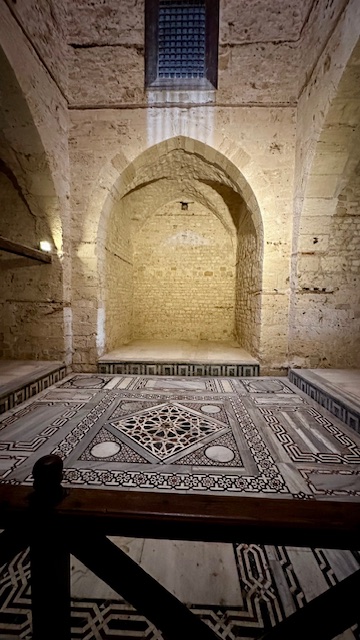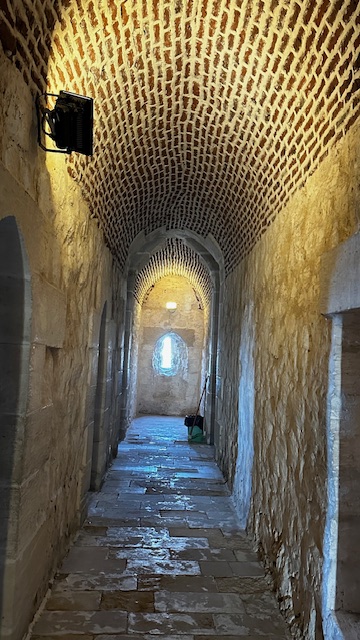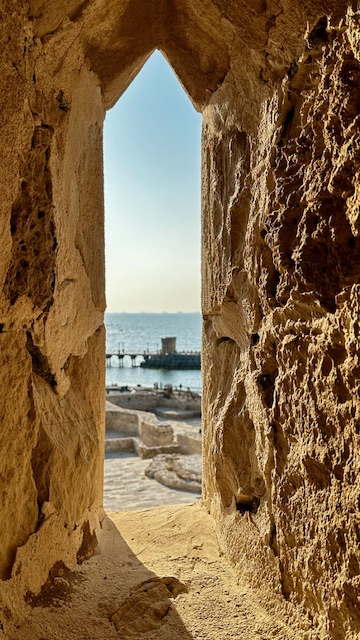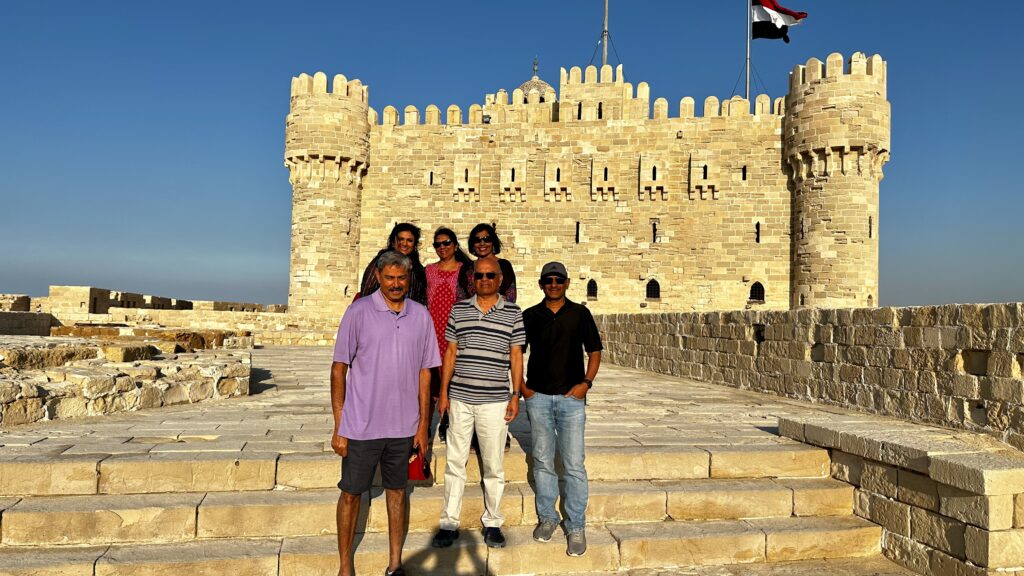Day trip to Alexandria from Cairo – The drive from Cairo to Alexandria was about 3 hours. We started off at 7am to avoid rush hour traffic, in spite of which we reached Alexandria by 10:30am. Our first stop was a visit to the Catacombs.
- Catacombs of Kom el-Shuqqafa
- Pompey’s Pillar
- Library of Alexandria (Bibliotheca Alexandrina)
- Fort Qaitbey
Catacombs of Kom el-Shuqqafa – the Catacombs of Kom El Shuqafa, one of Egypt’s largest burial site, offers an admirable example of the characteristic Alexandrian fusion of Egyptian and Greco-Roman styles. Kom El Shuqafa, or the hill of treasures in the Arabic language, was unearthed by chance at the beginning of the 20th century when a donkey fell into it. Dating back to the 2nd century A.D., this cemetery was dug inside the rock to a depth of 35 meters (115 feet). It consists of three levels, all located under the ground level. However, the lowest level is now inaccessible due to flooding.
The entrance is via a spiral staircase 6 meters in diameter and a cylindrical water well about 10 meters deep. The underground complex consists of three layers of tombs and chambers that reach a depth of 35 meters.
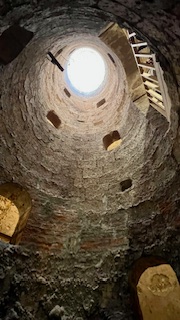
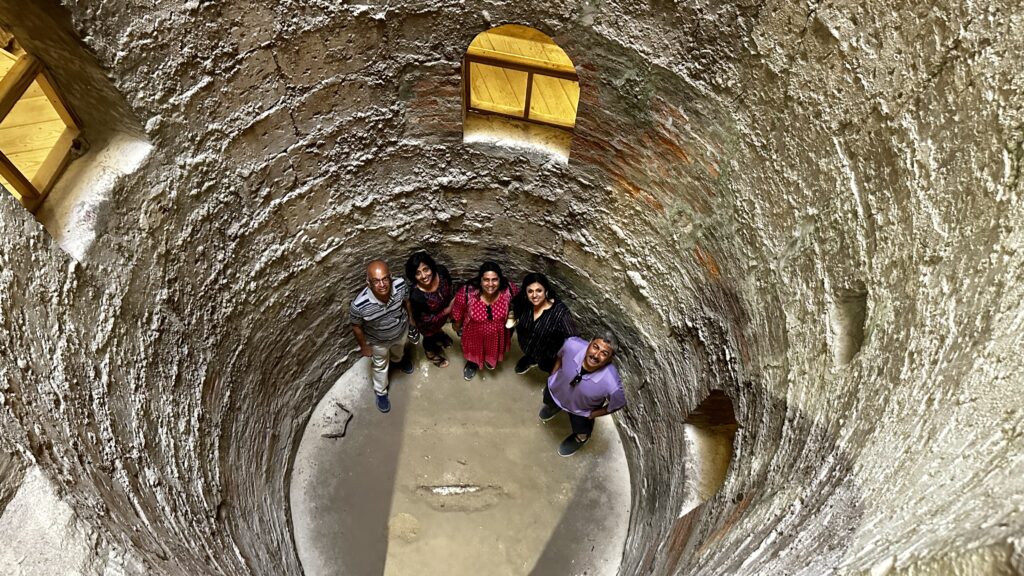
Staircase lead to the main tomb, the entrance of which is flanked by 2 pillars. The walls on either side of the entrance bears inscriptions of 2 cobras with shields placed above them.
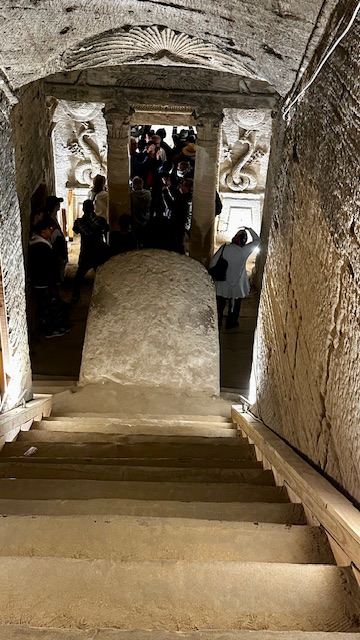
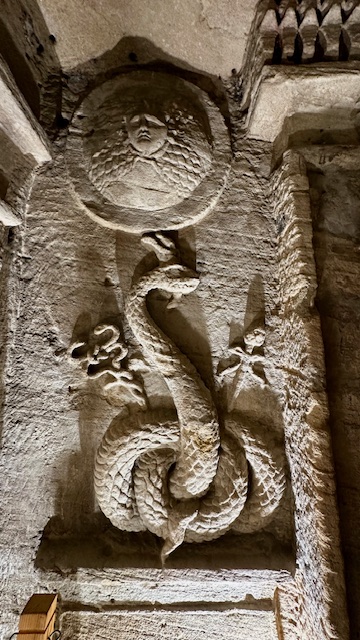
There are 3 relief panels carved into the walls above the sarcophagi inside the main tomb. The central panel depicts Osiris, the Egyptian god of the afterlife, dead, and resurrection, lying down on a table. He is being mummified by Anubis, the god of death, mummification, and the underworld. At the sides of the bed, assisting Anubis are Thoth and Horus. The two lateral panels show the Egyptian bull god Apis receiving gifts from a pharaoh standing beside him.
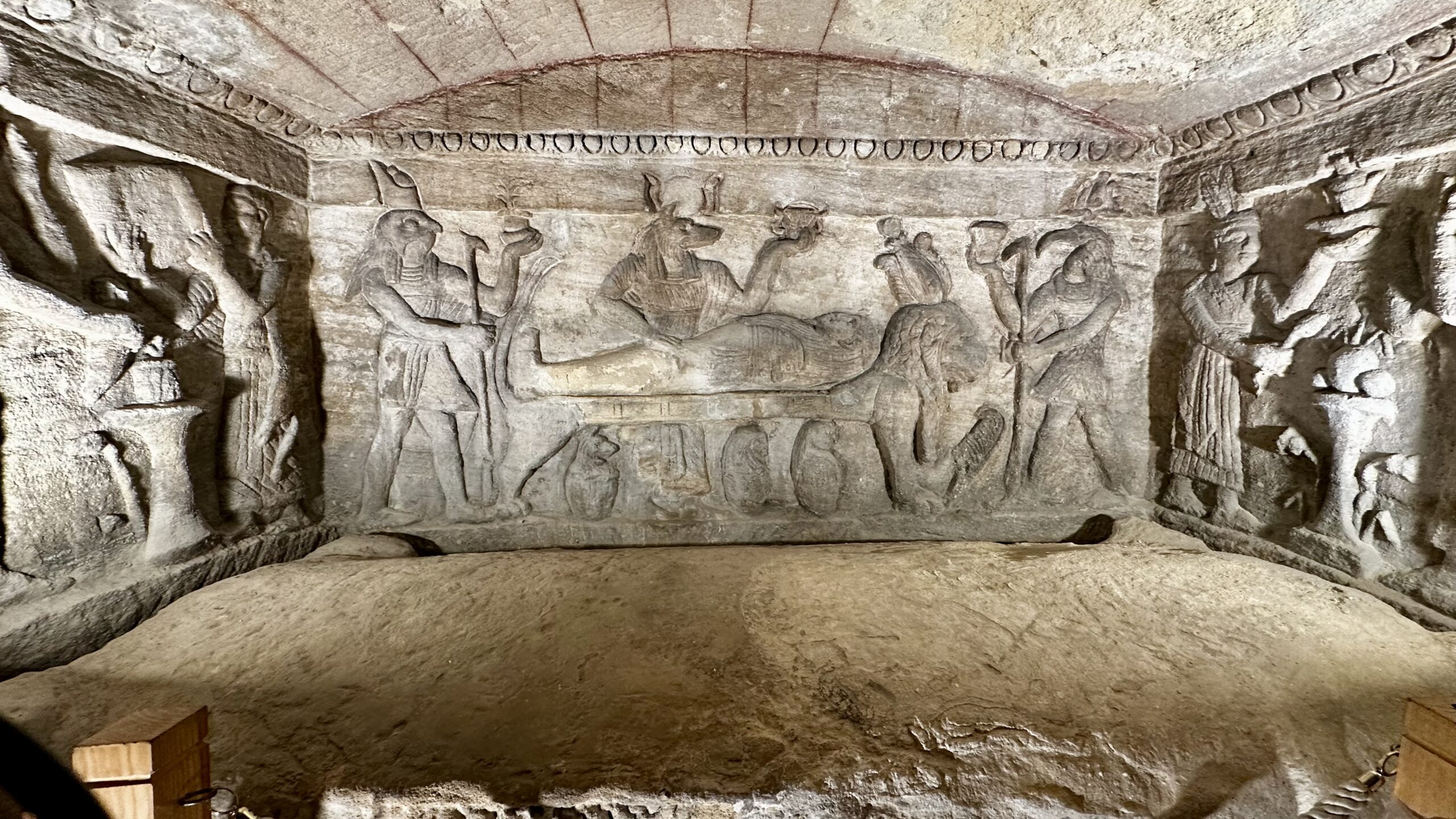
Walking around the catacomb …
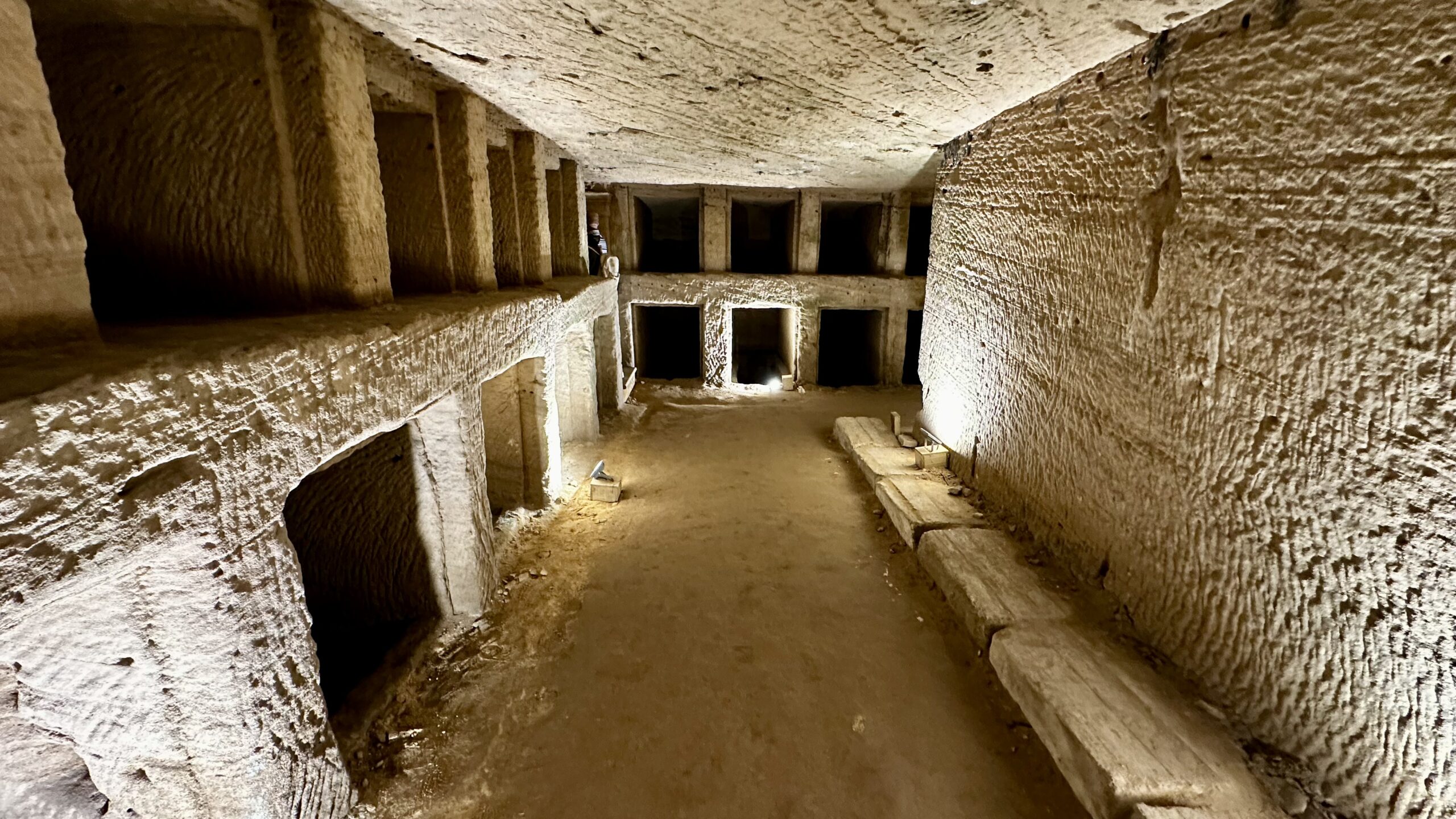
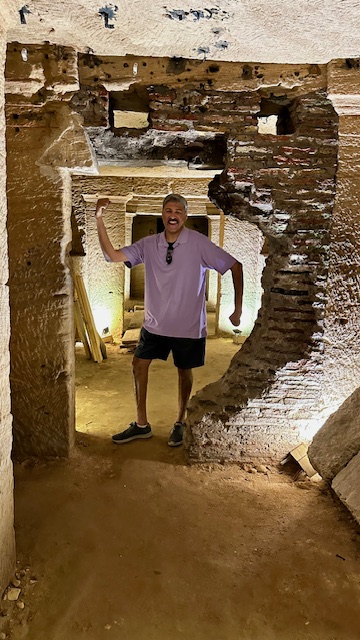
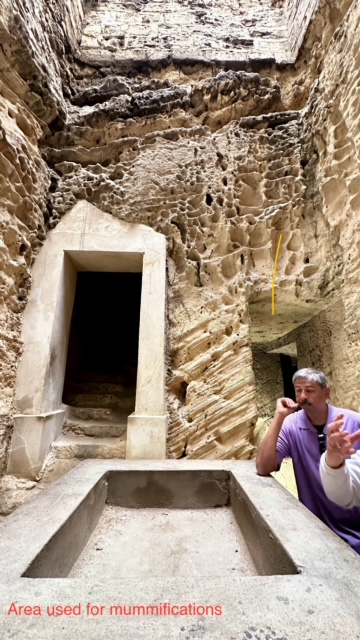
Tigrane tomb – The Tomb of Tigrane is situated a few meters away from the main entrance to the catacombs. It is famous for its wall paintings with Pharaonic funerary motifs, mixed with some Greek symbols, and executed in the typical Alexandrian Hellenistic style. The Tomb of Tigrane dates back to the 1st century A.D. and was discovered in 1952.
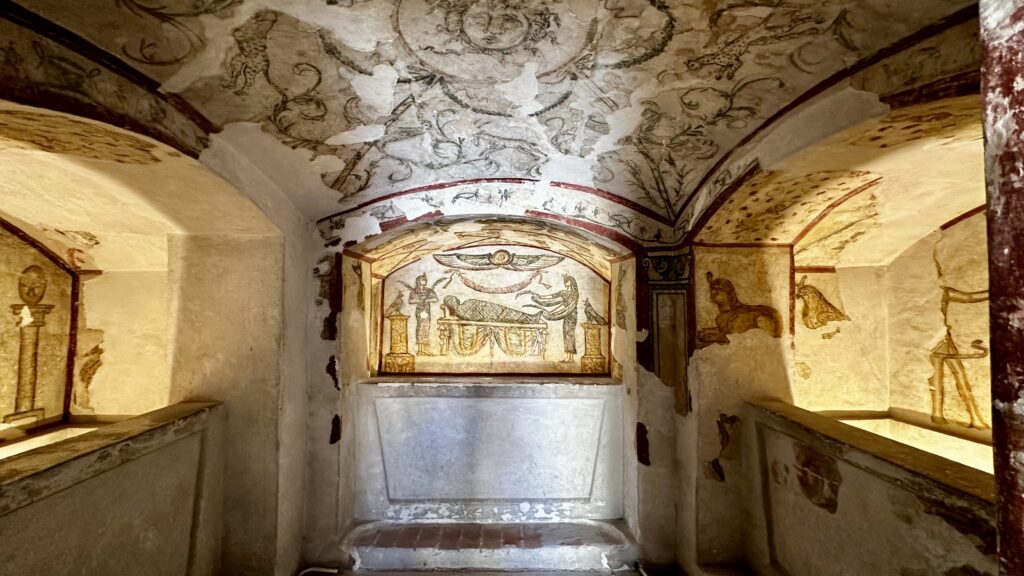
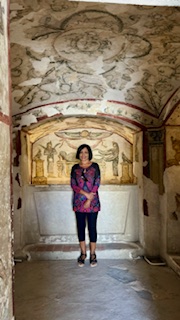
Pompey’s Pillar – In Carmous, near the Catacombs of Kom el-Shuqqafa, is the Pillar of Pompey, which consists of a large granite column dating from Roman period. This column is part of the ruins of a huge Roman complex, known as Serapeum (Temple of Serapis). This temple was built during the rule of Ptolemy I at the end of third century to worship the god Serapis. Serapis is a fusion of many Egyptian gods such as Osiris, Apes, as well as Greek gods like Zeus and Dionysus.
The Pillar, a column of red Aswan granite with a Corinthian capital, rising to a height of almost 27 meters (including its base and capital), was set up in 292 CE in honor of Diocletian, who supplied food for the starving population after the siege of the city. On each side of the pillar, there are 2 sphinx statues, made of red granite.

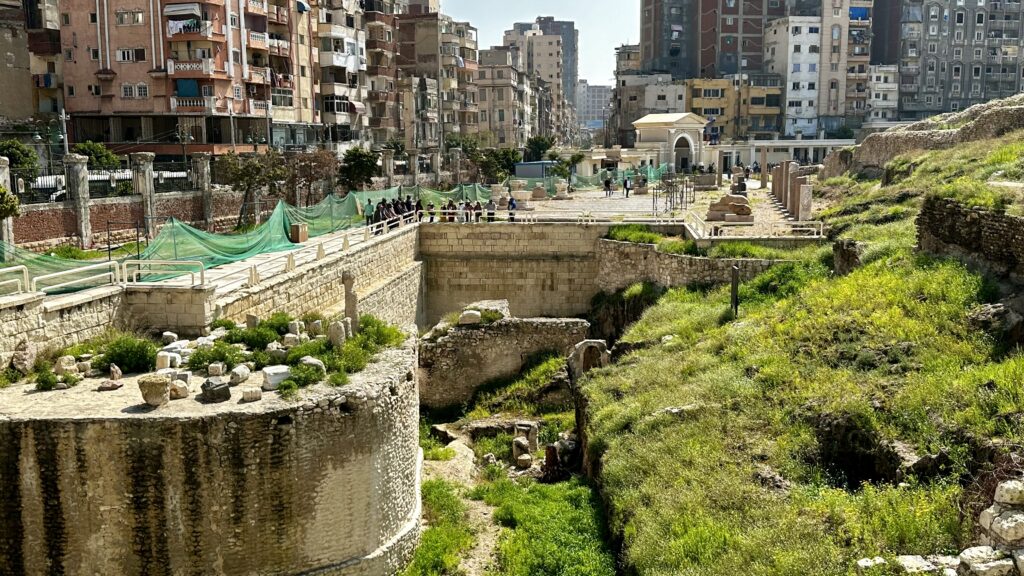

Library of Alexandria (Bibliotheca Alexandrina) – The Library is located on a magnificent site alongside Alexandria’s ancient harbor in the historic center of the city. The 11-story library can contain up to 4 million volumes of books, and can be expanded up to 8 million by the use of compact storage. The Library also has other facilities including a planetarium, several museums, a school for information science, and conservation facilities.
The Bibliotheca Alexandrina is a revival of the legendary ancient library built in classical Greek times. The rebuilding of the library has returned Alexandria to its former status as a centre for learning and exchange and provided the city with a landmark building.
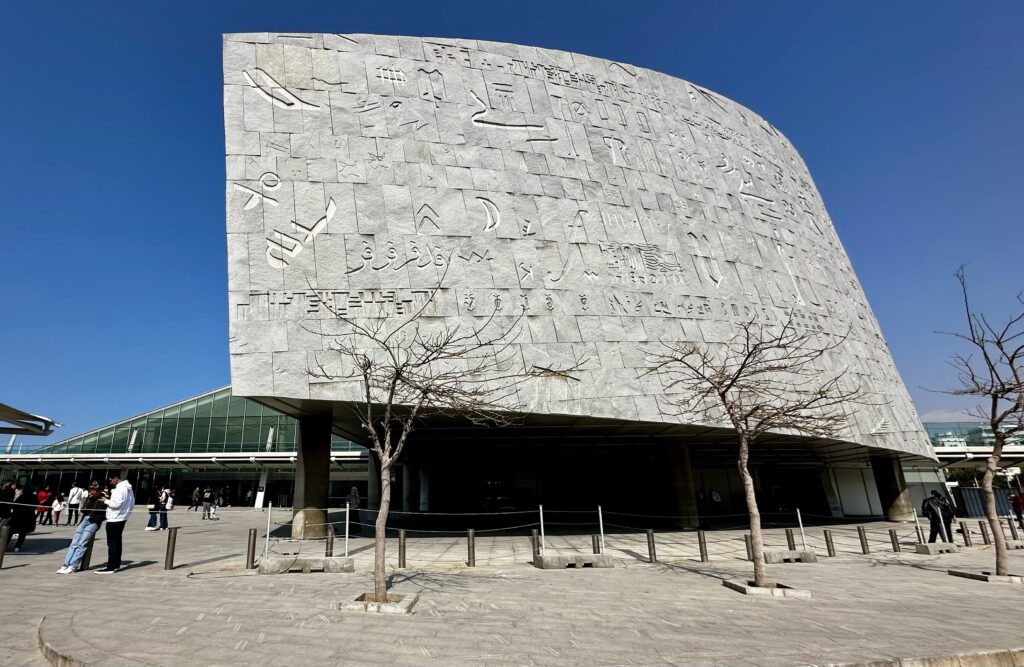
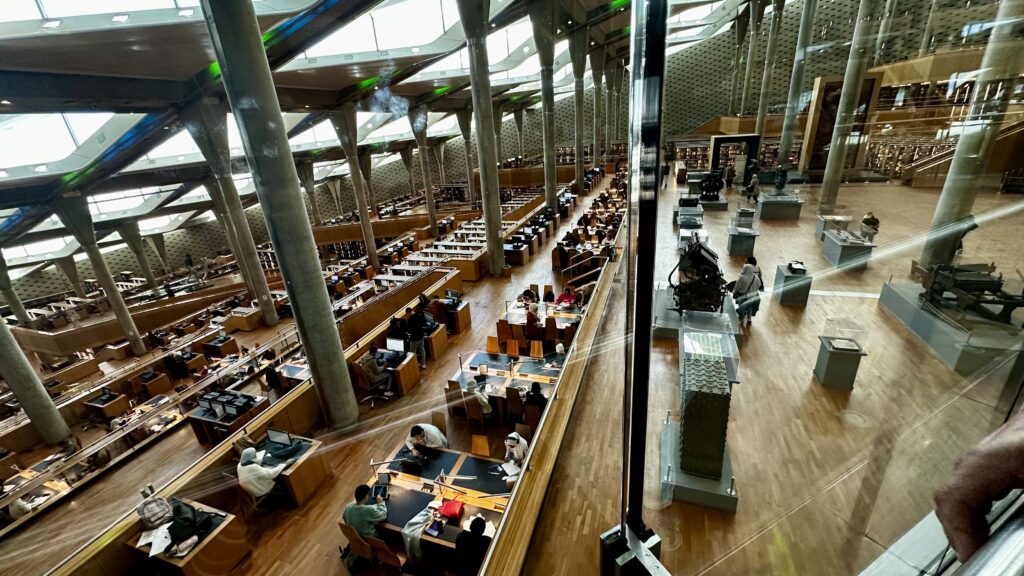


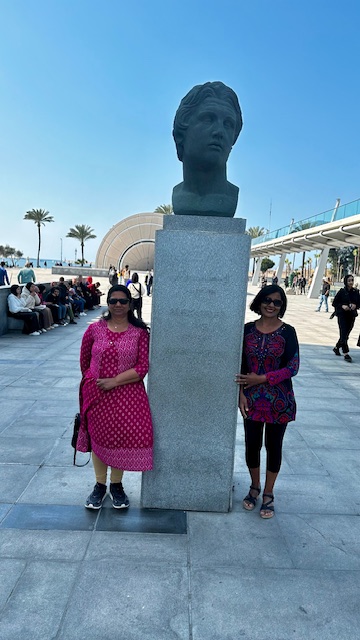
Fort Qaitbay – The Citadel of Qaitbay (or Fort Qaitbay) is a 15th-century defensive fortress located on the Mediterranean sea coast, in Alexandria. It was built from 1477 to 1479 AD by Sultan Qaitbay in an effort to fortify this important Egyptian port from attack. It was built on the site of the mighty Pharos Lighthouse–one of the seven wonders of the ancient world, which was toppled by a violent earthquake in 1303. Some of the rubble from the toppled lighthouse may have been used in the construction of the fort.
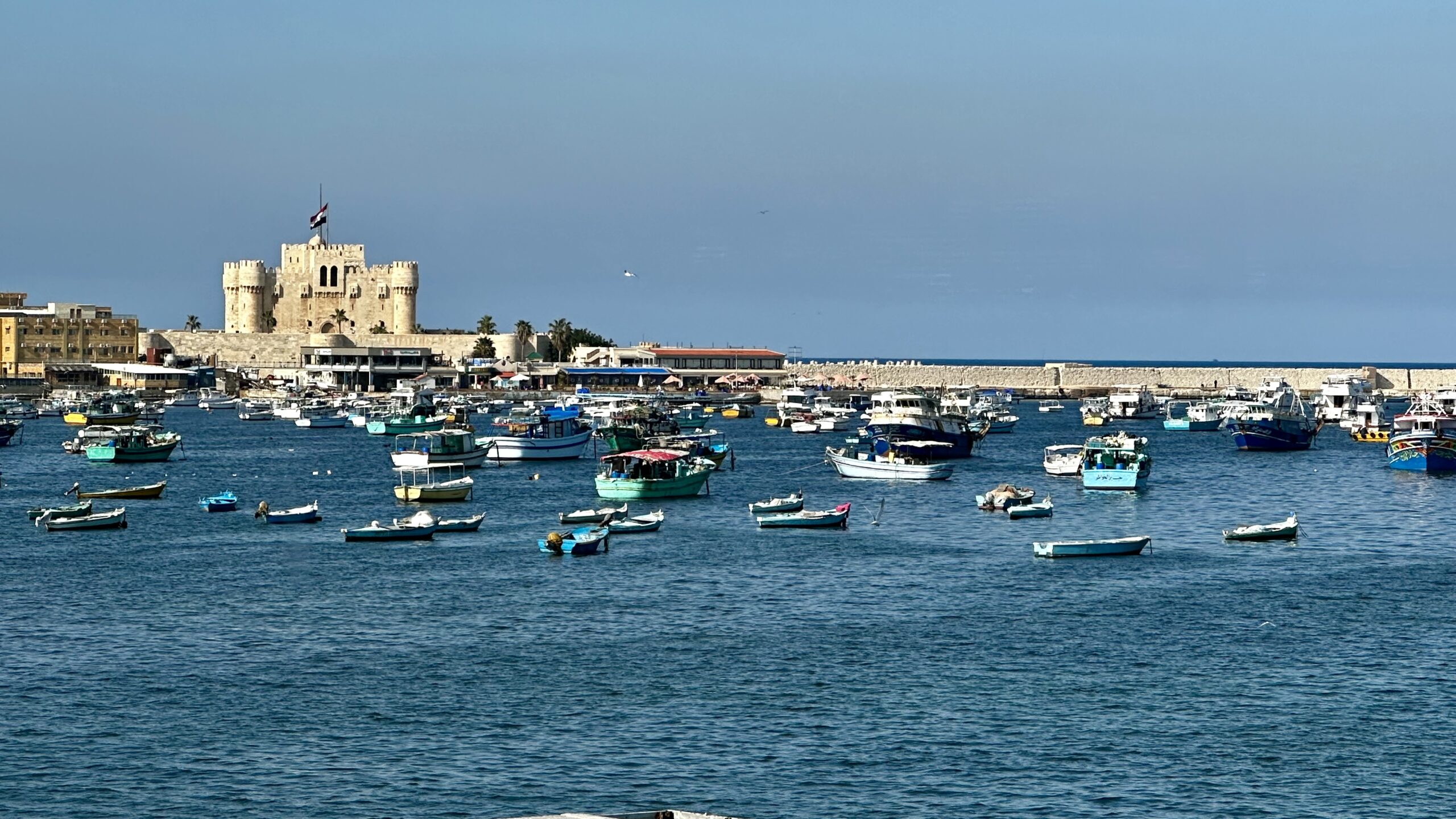
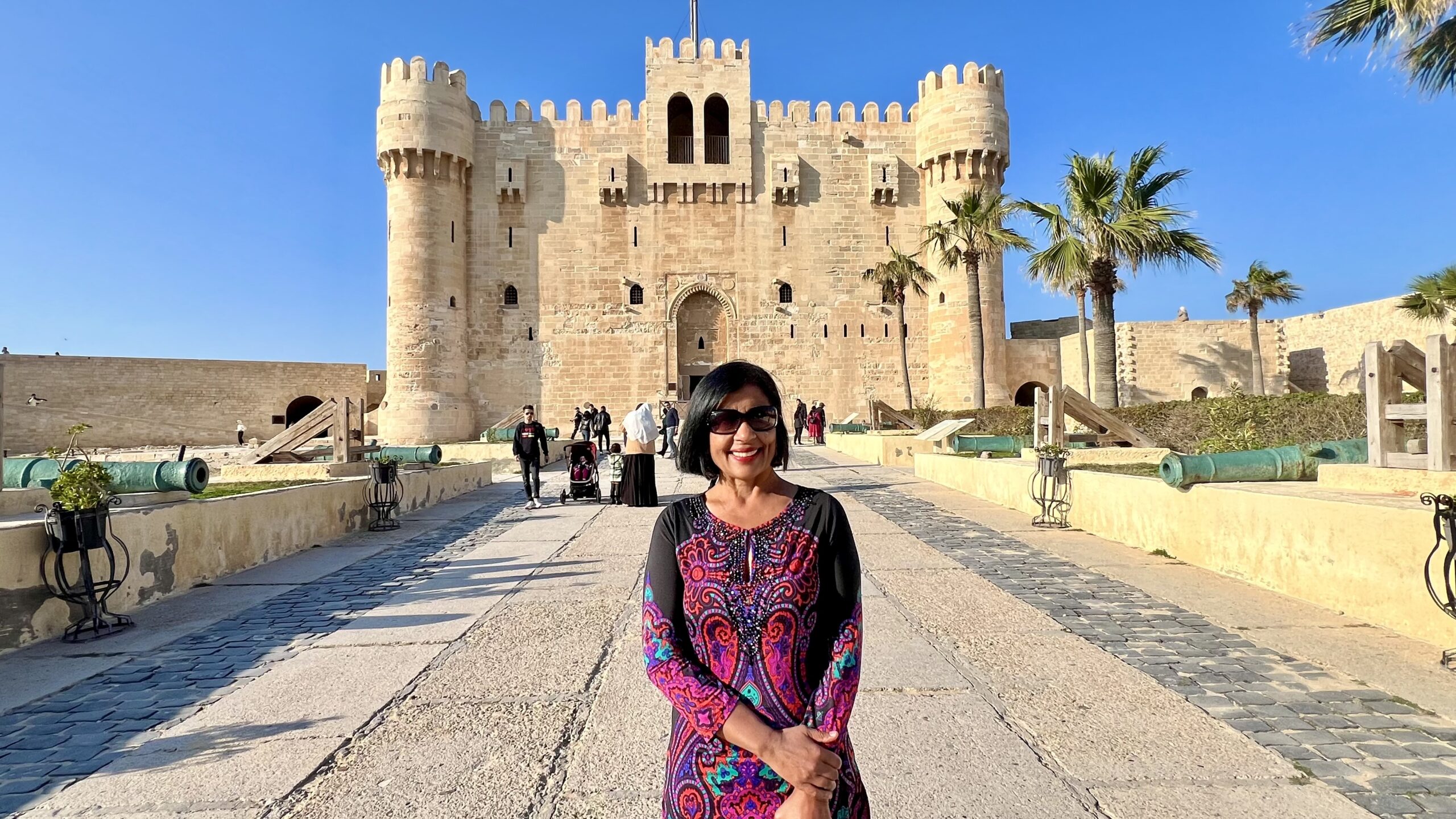
Inside the fort, you can explore the series of stone-walled chambers and climb up to the roof to look out over the Mediterranean. There is also a mosque on the first floor.
